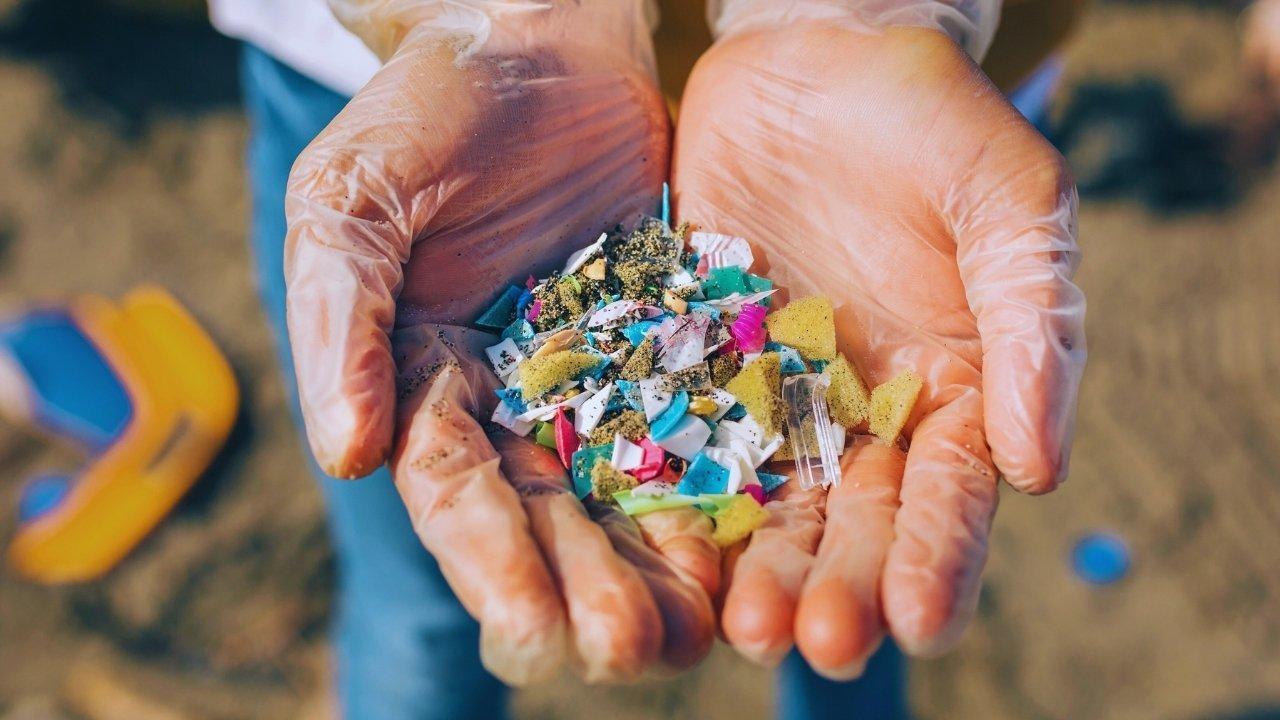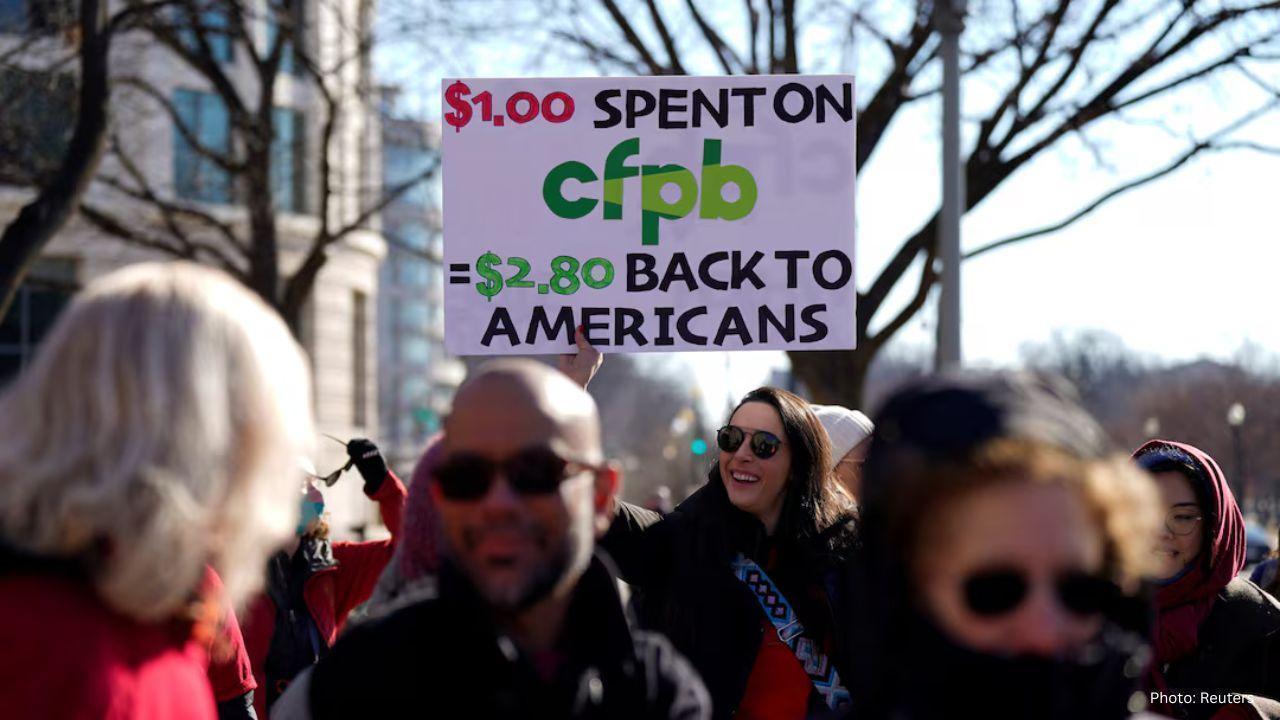You have not yet added any article to your bookmarks!

Join 10k+ people to get notified about new posts, news and tips.
Do not worry we don't spam!

Post by : Anis Farhan
Microplastics have become one of the most pressing environmental concerns of the 21st century. While they are often associated with marine pollution and the ingestion of plastic by fish and seabirds, new research highlights an alarming reality: microplastics are also affecting plants. A recent scientific study reveals that tiny plastic particles can disrupt photosynthesis—the very process by which plants convert sunlight into energy. This finding expands our understanding of how deeply plastic pollution has infiltrated ecosystems, raising concerns about food security, biodiversity, and climate stability.
Microplastics are defined as plastic particles smaller than five millimeters. They originate from various sources, including the breakdown of larger plastic items, microbeads found in personal care products, synthetic fibers shed from clothing, and even tire wear from vehicles. Because they are small and durable, microplastics easily spread through air, water, and soil, infiltrating almost every corner of the planet.
While much attention has been given to their impact on marine life, scientists are increasingly focusing on their presence in terrestrial ecosystems. Soil samples around the world—from agricultural fields to forests—show high concentrations of microplastics. Plants, being rooted in soil, are directly exposed, and this exposure is now proving to have serious biological consequences.
Researchers conducted experiments to determine how microplastics influence plant physiology, particularly the photosynthesis process. Using controlled soil conditions, scientists introduced different concentrations and types of microplastic particles and monitored how plants responded over time.
The findings were concerning. Plants exposed to microplastics showed a significant reduction in chlorophyll levels, which are essential for capturing sunlight. Their stomata—the microscopic pores that regulate gas exchange—were also negatively impacted, reducing the intake of carbon dioxide needed for photosynthesis. As a result, the plants’ overall ability to produce energy decreased, leading to stunted growth and reduced biomass.
In simpler terms, microplastics are choking plants from the inside out. By interfering with photosynthesis, they reduce plants’ ability to grow, reproduce, and provide food for other organisms, including humans.
Plants are the foundation of all terrestrial food systems. They provide not only direct nutrition to humans but also feed livestock and support biodiversity through complex food webs. If microplastics impair plant growth and reduce crop yields, the implications for food security are profound.
Imagine a world where staple crops such as rice, wheat, and maize are less productive due to contaminated soils. Farmers may face declining harvests, while consumers could experience rising food prices and nutritional shortages. Already, agricultural soils are heavily exposed to microplastics through the use of sewage sludge as fertilizer, plastic mulching films, and irrigation with polluted water. This means the risk is not a distant possibility but an active and growing concern.
The effects of microplastics on plants extend beyond farming. Forests, grasslands, and wetlands—all of which play crucial roles in maintaining ecological balance—are also vulnerable. If microplastics weaken the health of plants in these ecosystems, the consequences could cascade through the entire environment.
Forests, for example, are vital carbon sinks that absorb carbon dioxide and help regulate the Earth’s climate. If microplastics impair tree photosynthesis, the ability of forests to capture carbon could diminish, accelerating climate change. Wetlands and grasslands, similarly, support unique species and serve as natural buffers against floods and soil erosion. A decline in plant health in these habitats could lead to biodiversity loss and weakened ecosystem resilience.
Understanding how microplastics reach plants is crucial to tackling the problem. Unlike marine environments, where plastic pollution is visible in floating debris, soil microplastics are harder to detect. Yet they are pervasive.
One major source is agricultural practices. Plastic mulching—thin sheets of plastic laid over fields to retain moisture and suppress weeds—eventually breaks down into microplastics. Fertilizers derived from sewage sludge often contain high concentrations of microplastics, which are transferred directly to farmland. Irrigation systems that use polluted water can also carry microplastics into the soil. Even atmospheric deposition—tiny particles carried by wind—can sprinkle plastics onto fields and natural landscapes.
The cumulative effect is that plants are constantly surrounded by microplastics, absorbing them into their roots and experiencing physiological stress as a result.
While the immediate concern is plant health, the issue inevitably loops back to humans. If crops absorb microplastics, they could make their way into the human food chain. Already, studies have detected microplastic particles in fruits, vegetables, grains, and even drinking water. Consuming these particles may pose health risks, from inflammation and oxidative stress to potential long-term impacts that are not yet fully understood.
The reduction in crop productivity due to impaired photosynthesis further threatens human health by limiting food availability and potentially increasing malnutrition rates in vulnerable regions. The intersection of environmental pollution and human well-being has never been clearer.
Addressing the microplastic crisis requires action on multiple fronts:
Reduce Plastic Production: Limiting single-use plastics and transitioning to biodegradable alternatives can curb the introduction of new microplastics into the environment.
Improve Waste Management: Proper recycling, plastic collection, and stricter regulations on plastic disposal are essential to prevent plastics from breaking down into smaller particles.
Sustainable Farming Practices: Encouraging alternatives to plastic mulching, improving wastewater treatment before using sludge as fertilizer, and monitoring irrigation water can minimize microplastic exposure in agriculture.
Scientific Innovation: Researchers are exploring advanced filtration systems to capture microplastics from wastewater and soil treatments that could neutralize or remove plastic particles.
Public Awareness: Educating farmers, policymakers, and consumers about the risks of microplastics to plants and food systems can drive demand for cleaner practices and stricter regulations.
Plastic pollution is a global issue, and so are its impacts on plants. Countries across Asia, Europe, Africa, and the Americas must work together to create comprehensive policies to reduce plastic leakage into the environment. International cooperation will be vital, as plastics produced in one region often travel across borders through trade, rivers, and atmospheric circulation.
This is not just a problem for environmentalists or farmers—it is a challenge that affects everyone. Plants are at the heart of life on Earth. If their ability to grow and photosynthesize is compromised, the ripple effects could threaten food supplies, economies, and the stability of entire ecosystems.
The discovery that microplastics disrupt plant photosynthesis should serve as a wake-up call. For years, scientists and policymakers have focused primarily on the marine impacts of plastic pollution. Now, it is evident that land-based ecosystems are equally at risk. Plants, which provide the oxygen we breathe and the food we eat, are silently suffering under the invisible burden of microplastics.
Solving this crisis requires urgent global action, from reducing plastic production to implementing sustainable agricultural practices. The health of our plants is directly tied to our own survival. Ignoring the problem is no longer an option.
This article is intended for informational purposes only. It does not replace professional environmental or agricultural advice. Readers should consult relevant experts and official guidelines before making decisions related to farming, food production, or environmental management.










China Claims India-Pakistan Peace Role Amid India’s Firm Denial
China claims to have mediated peace between India and Pakistan, but India rejects third-party involv

Mel Gibson and Rosalind Ross Split After Nearly a Decade Together
Mel Gibson and Rosalind Ross confirm split after nearly a year. They will continue co-parenting thei

Rashmika Mandanna, Vijay Deverakonda Set to Marry on Feb 26
Rashmika Mandanna and Vijay Deverakonda are reportedly set to marry on February 26, 2026, in a priva

FIFA Stands by 2026 World Cup Ticket Prices Despite Fan Criticism
FIFA defends the high ticket prices for the 2026 World Cup, introducing a $60 tier to make matches m

Trump Claims He Ended India-Pakistan War, Faces Strong Denial
Donald Trump says he brokered the ceasefire between India and Pakistan and resolved eight wars, but

Two Telangana Women Die in California Road Accident, Families Seek Help
Two Telangana women pursuing Master's in the US died in a tragic California crash. Families urge gov